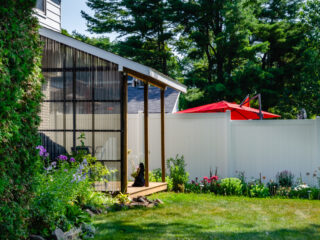
Imagine coming home one day to find water dripping through your ceiling or sunlight peeking through places it shouldn’t. That’s a homeowner’s nightmare, right?
Often taken for granted, your old roof stands between you and these unwelcome surprises. Before you rush into the decision to replace it, there are a few factors you’ll want to consider.
Stick with us as we explore what it takes to make a wise choice about your home’s crown. Let’s begin!
1. Roof Age and Condition
The age of your roof plays a crucial role in determining if a replacement is necessary. Most roofs have a lifespan of 20 to 30 years, depending on the material used.
If your roof is nearing this age or has surpassed it, inspecting its condition becomes essential. Look for signs of wear and tear, such as:
- missing shingles
- leaks
- sunlight entering through the roof
These indicators often mean that the roof is deteriorating and may not provide the protection your home needs. Regular inspections can help identify these issues early, saving you from premature replacement costs.
2. Types of Materials Used
The material you choose for your roof impacts its appearance, longevity, maintenance needs, and cost. Common roofing materials include:
Asphalt Shingles
Asphalt shingles are the most popular due to their affordability and ease of installation. They can last 20 to 30 years and come in a variety of styles and colors to match your home’s aesthetic.
Metal Roofing
Metal roofing is durable, lightweight, and resistant to fire, wind, and insect damage. It typically lasts 40 to 70 years but comes at a higher cost than asphalt shingles.
Slate Roofing
Slate is a natural stone material that adds a unique and elegant appearance to your home. It can last up to 100 years but may be more expensive and require specialized installation.
3. Budget Considerations
Consider not only the cost of materials but also labor and additional costs such as removing old shingles or repairing underlying damage.
While opting for cheaper materials may save money upfront, they may not last as long or have higher maintenance costs in the long run. So, it’s wise to weigh your options carefully and choose materials that fit within your budget while also providing longevity and durability.
4. Climate and Local Building Codes
The climate in your area plays a big role in determining the type of material that will be most suitable. For example, if you live in an area prone to heavy snow or rain, a material that is resistant to water damage would be a wise choice.
Additionally, local building codes may require permits for certain types of roofing materials or methods. It’s best to check these regulations to ensure compliance and avoid potential fines.
It’s advisable to consult with roofing experts, like those from Maccabees Roofing Contractors. They can provide recommendations based on your needs and local conditions.
Plus, they can ensure that your investment is both wise and resilient to the tests of time and weather.
Making the Decision to Replace Your Old Roof
Deciding to replace your old roof is a major decision. It not only protects your home but also enhances its appearance and value. Remember, the right time to act is before minor issues become major problems.
If you’ve considered the factors above and think it’s time for a change, don’t hesitate. Reach out to a trusted professional today!
Did you find this article helpful? Check out the rest of our blog now!







